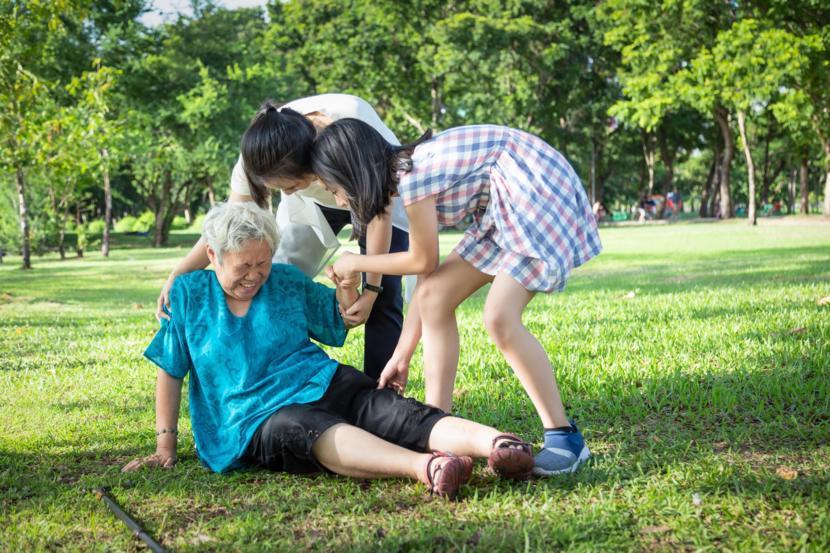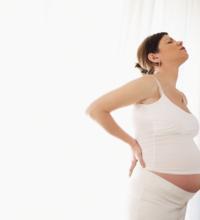How do I Help my Grandma Stop Falling?

Dr. Michael Hyland earned a Doctorate in Physical Therapy from the University of St. Augustine for Health Sciences of St. Augustine, FL in 2012. While in the Doctoral program he became fascinated with the treatment of neurological conditions, particularly Parkinson's disease. He has practiced as a physical therapist for... more
As a Doctor of Physical Therapy, I get asked this question a lot. Just insert any pronoun that you prefer, i.e. my Dad, my Mom, my Aunt, my Grandpa, and so on. After all, falls, repeated falls, are a reality for literally one-quarter of the population in the USA who are older than 65 years! The answer to this question is not a one-sentence answer. It is not a one-paragraph answer. And at the risk of sounding cliche, I would say, “it depends.” The root cause of why falls are happening is a crucial piece of information for prescribing a remedy for prevention. The key thing to remember is that falls may be caused by multiple things and finding one specific cause may not be as simple as it sounds.
This is why experts such as physical therapists and occupational therapists are such excellent resources when it comes to fall prevention; the detective work is what some of us love to delve into when it comes to aging adults. Not to mention, we therapists are all trained to assess such issues when it comes to home safety, etc. The best way to stop Grandma from falling is to look at all of the areas that may contribute to falls and how they can be adjusted. As you will see, the primary care physician or specialist(s) who are caring for Nana is also an important part of preventing falls. Let’s dive into these areas next. There is only a handful, but these are the ones I consider to be among the most important. By the way, I also covered this in a video on YouTube if you would rather listen than read. You can access the video here.
Medications
The medications that your loved one is taking make a huge difference in their risk of falling. Granny only needs to be on 4 prescription medications or more to be considered at risk for falling. This is called “poly-pharmacy.” Regardless of medication type or mechanism, poly-pharmacy is an automatic fall risk. This is in part due to the fact that medications may interact with each other to create other symptoms. The other issue on top of poly-pharmacy is duplication, where the primary care physician or other physicians may prescribe multiple medications that do the same thing, e.g. blood pressure pills. Although intentions are good, duplication may result in too much of a good thing.
In our example, too many blood pressure pills may result in the BP becoming too low and resulting in passing out and fatigue. Many medications also have side effects that can result in automatic fall risk even when prescribed by themselves. These include barbiturates, opioids, benzodiazepines, antipsychotics, antidepressants, and more. In addition, many medications have side effects such as dizziness or light-headedness. A complete list of medications that may be a “no-no” for aging adults is found in the Beers Criteria published by the American Geriatrics Society.
You may consider sharing this with your Grandma’s physician. A summary can be found using this link: https://www.guidelinecentral.com/summaries/american-geriatrics-society-2015-updated-beers-criteria-for-potentially-inappropriate-medication-use-in-older-adults/#section-society
So, the key point here is that physicians need to be a part of your fall prevention team in that they need to be reviewing the entire medication list annually, if not semi-annually, to ensure that there is no duplication and/or to find alternative medications to help with treated conditions. Reduction in medications, when possible, is not a bad thing. This may be a root cause of that fall she had when getting up to use the bathroom at 3 AM.
Vision (AKA, Oh say, can you SEE?)
Vision is one of the three main mechanisms of balance; therefore, having impaired vision or absence of vision is a recipe for fall risk. As we age there tend to be changes in vision. Some of these changes may be in visual acuity while others may be things like cataracts, glaucoma, or macular degeneration. In addition, other health problems such as diabetes mellitus can result in damage to the nerves of the eyes and the retina and can result in impaired vision or complete blindness in the worst cases. It cannot be emphasized enough that regular checks with a Doctor of Optometry or Ophthalmologist could go a long way in fall prevention. Something as simple as a new prescription for old glasses that had not been updated in a long while could add a lot of clarity to the world around you.
Grandma may not like going to the eye doctor, but it could save her from a lot of pain and suffering if it prevents a fall. If she happens to have a chronic condition that will not improve such as blindness, retinal degeneration, macular degeneration, etc. then ensure that she gets physical therapy treatments for balance and strengthening to prevent falls. Her balance mechanisms need even more fine-tuning to compensate for the visual impairment and keep her safe. An occupational therapist may also be an excellent resource in this instance as many have expertise in adapted environments and equipment for the visually impaired.
Incontinence
Incontinence of the bowel or bladder can not only be embarrassing and a pain to deal with, but it can also greatly increase the risk of falling. This is due to the urge to rush to the bathroom to avoid an accident. When this happens at night it can be a disaster when combined with a dark room and objects in the room that may be tripped over. Sometimes incontinence may be due to urgency that can be brought on by certain medications, such as diuretics. This may be an area to discuss with the physician if urgency is becoming a problem.
A physical therapist who is trained and has specific expertise in pelvic floor treatments may be a game-changer, as sometimes incontinence in men and women may be due to weakened pelvic floor musculature. If these approaches do not work as well for your Oma then adult incontinence underwear could help prevent the sense of urgency to get to the bathroom on time and therefore could prevent a fall.
Depression
Feeling slowed down or not feeling well can be symptoms of depression. Depression in the aging population can be devastating due to the effect that it can have on one’s motivation to be active and engaged in their daily activities. Those who suffer from depression tend to isolate themselves and will often become more sedentary. This can lead to muscle weakness and a higher risk of falls. This is one reason that depression screens are important as our loved ones get older. Take it seriously and you just may prevent the chain of events that could lead to falls.
Lower Body Weakness & Slow Walking Speed
Have you noticed that Grandma is having more trouble getting up from a chair lately? If she relies on her arms to get up from her favorite chair, you could almost bet money that her legs are weaker than they used to be. Folks who are a lot smarter than I have researched the connection between weakness in the lower body and the risk of falling. The longer it takes to perform repeated sit and stand, the fewer reps performed, and the more reliance on the arms all point to an increased risk of falls. Sure, there will be times when arthritis and knee pain cause one to push with the hands to get up and down from a chair. Then again, weakness in the thighs is often linked with arthritis of the knees. Coincidence? You decide.
In addition to leg weakness, the slow pace of gait could be an issue. In fact, they are often correlated. On the surface, this may seem like not a big deal. After all, Grandma is getting on in years and she is slowing down because she isn’t in a hurry anymore. She also may not be feeling as spry as she used to. Have you considered that for as long as people have been getting older, and that’s a very long time, as they slow down they also start losing the ability to do more and more and start to fall and then possibly die of complications that may not have occurred without the falls? Well, there is something to this. Slow walking speed is directly linked to poor balance, a fall risk, and predicts the risk of hospital stays and even death.
The research behind this is relatively new, but it is so important that walking speed has been dubbed “The Sixth Vital Sign.” The best part of all of this? It’s preventable. If the walking is slower than it should be, it’s fixable. How? It is so simple it’s almost silly. Increasing strength, particularly in the legs, and improving balance will automatically result in a natural increase in walking speed. This walking speed is not “fast walking,” but rather a person’s self-selected natural walking speed. The self-confidence of a person with adequate and safe walking speed is naturally better due to the fact that a person with adequate leg strength and balance does not worry about falling. This is very important, so don’t discount the sign of your loved one slowing down. It just may be the beginning of a downhill path.
Our experts at Hyland Physical Therapy and Wellness are dedicated to the safety and well-being of your Grandma, and we would be happy to provide even further assistance and detailed instructions when needed. We specifically help people with Parkinson’s Disease to remain active, independent, and mobile in order to empower them for life, family, and fun. Sign up for a call today using the link below. https://clarity.fm/drmichael.









